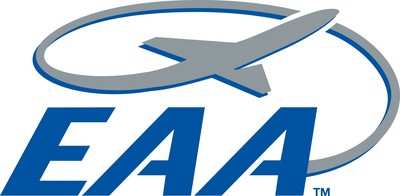Mon, Jan 19, 2015
EAA And General Aviation Working Group are In Front Of NTSB Focus On Loss-Of-Control Accidents
EAA reports that they and the general aviation community are already well ahead of the curve when it comes to finding ways to reduce GA loss-of-control accidents, because of several years of progress through the FAA’s General Aviation-Joint Steering Committee working group that has studied those accidents.

Loss-of-control accidents in general aviation gained visibility this week when the National Transportation Safety Board named it as one of its Top 10 Most Wanted List of transportation safety improvements. It was the only GA item mentioned in this year’s list, which also includes rail, mass transit, commercial trucking, and motor vehicles driving impairment.
“The general aviation community is already well on its way toward meeting its own goal of studying loss-of-control and finding ways to reduce those totals through its exhaustive work within the GA Joint Steering Committee,” said Sean Elliott, EAA’s vice president of advocacy and safety. “EAA has been a very active member of this committee’s working group, which is focused on using verifiable data to find causes and the best ways to address the issue, while not wasting time and resources on solutions that would have only a minimal impact.”
EAA co-chaired the first Loss-of-Control Working Group several years ago and has been the lead organization for implementing several of the group’s safety enhancements regarding training and outreach. Among the solutions advanced by EAA through the Loss-of-Control Working Group was the recently FAA-approved use of a test pilot for Phase 1 flight testing in amateur-built aircraft.
Elliott, who serves on the GA-JSC steering committee, noted that the process being used by the GA working group is similar to the Commercial Air Safety Team (CAST) program adopted by airlines in the 1990s that greatly reduced their accident rate. The CAST program evaluates data over a longer period of time that shows trends and specific items to address through education and training.
“EAA has always believed that education is more effective than regulation, and our members have always shown themselves to be dedicating toward making themselves better pilots,” he said. “While the NTSB focus on GA loss-of-control accidents is a good reminder, the aviation community and the public should know that EAA is already part of an outstanding, substantial GA community effort toward a solution.”
More News
Its Offerings Are Lighter, Cleaner, and Now Pushing Past 1,000nm on SAF Jet Fuel DeltaHawk’s diesel-powered aircraft lineup has seen incredible upgrades over the last few yea>[...]
The Airplane Experienced A Total Loss Of Engine Power On December 3, 2025, about 1600 central standard time, a Mooney Aircraft Corp. M20K, N57229, was substantially damaged when it>[...]
Make Sure You NEVER Miss A New Story From Aero-News Network Do you ever feel like you never see posts from a certain person or page on Facebook or Instagram? Here’s how you c>[...]
Aero Linx: European Society of Aerospace Medicine (ESAM) As a pan-European, independent forum, it works to promote the safety and health of all persons involved in aviation and spa>[...]
“We are excited to see Wisk achieve this milestone, and I’m so proud of the team that made it possible. The team at Wisk has built advanced technologies across flight c>[...]
 Aero-TV: DeltaHawks Diesel Power Steps Into the Spotlight
Aero-TV: DeltaHawks Diesel Power Steps Into the Spotlight NTSB Prelim: Mooney Aircraft Corp. M20K
NTSB Prelim: Mooney Aircraft Corp. M20K ANN FAQ: Turn On Post Notifications
ANN FAQ: Turn On Post Notifications ANN's Daily Aero-Linx (12.20.25)
ANN's Daily Aero-Linx (12.20.25) Aero-News: Quote of the Day (12.20.25)
Aero-News: Quote of the Day (12.20.25)



